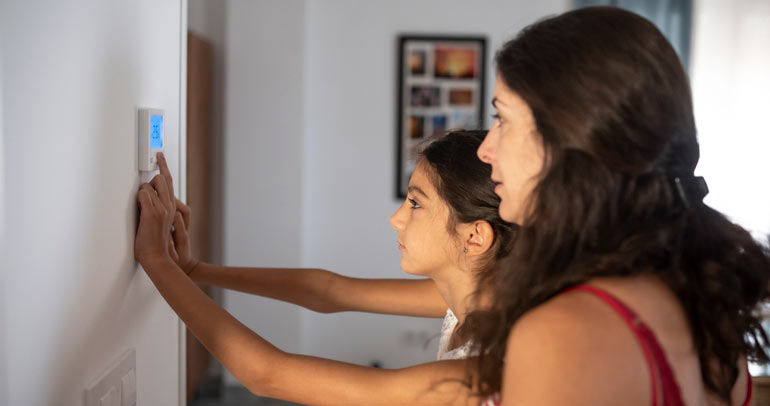
After nearly three years of steady and significant declines, customer engagement and brand trust among US residential utility customers is declining at a slower pace.
From midyear 2023 to midyear 2024, the utility industry Brand Trust Index declined eight points to 680 on a 0-to-1,000 scale, the lowest score recorded since the study was launched in 2014. While this isn’t exactly great news, it’s better than it has been: this is the first quarter the decline hasn’t seen a double-digit drop since the fourth quarter of 2022.
Additionally—with the caveat that you shouldn’t make any big bets on a quarterly improvement—in the second quarter of 2024, Brand Trust saw its first quarterly improvement since the end of 2020. Granted, it’s an improvement of only three points, but what a treat it was to see that trending line finally make a small curve upward.
Leading the improvement in Brand Trust were Escalent’s 2024 Most Trusted Brands, the 33 utilities with Brand Trust Index scores in the top decile of the industry, the top score within their respective benchmark segment, or a Brand Trust Index score within 20 points of the top benchmark segment score and above the industry average. As a group, these utilities saw a two-point increase year over year and a five-point improvement from the first to the second quarter of 2024.
While these utilities are doing various things to stay ahead of the rest of the pack, I want to discuss how they are approaching communicating about customer savings across income brackets. Steering customers to energy conservation and savings opportunities has emerged as a key differentiator for top-performing utilities, with more than one-third of customers citing “helps me save” as one of the Top 2 characteristics of their ideal utility, trailing only reliable service.
Helping customers save is important: consumers who agree that their utility offers programs that can or did help them save money give their utilities 24% higher Brand Trust scores. Likewise, customer recall of utility messages on ways to lower energy consumption correlates with 8% higher scores.
Customers Across Income Brackets Are Looking for Relief in Energy Savings as They Continue to Struggle with Cost-of-Living Increases
Rising utility bills are adding to the financial strain on Americans already dealing with higher costs for groceries, housing and insurance. Even higher-income customers who make over $100,000 a year are reporting a significant decline in perceived monthly utility bill manageability.
Customers across income brackets are looking for utility savings opportunities and many are having trouble finding them. Since mid-2021, customers in the highest income bracket (those who make $100,000 and above) have seen a 10% decline in the perception that utility offerings can help them lower costs. Customers making $75,000 to $99,000 a year reported a 6% decline over the same period and now have the lowest score for this attribute.
The Most Trusted Brands aren’t bulletproof—they also saw declines in savings perceptions for customers with household incomes of more than $50,000. Still, those declines were less dramatic and perception scores are significantly higher across income segments for these 33 utilities.
Four Ways Most Trusted Utility Brands Are Helping Customers Save Big and Building Greater Brand Trust
Most Trusted Brands are not simply utilities with more savings opportunities to offer their customers; these companies also communicate about those opportunities more effectively than their peers.
In addition to ensuring they’re frequently communicating to customers about savings opportunities across a variety of channels, here are four best practice tips gleaned from Most Trusted Brands on how utilities can help their customers save money and build brand trust while doing so:
- Outline income requirements for income-based assistance on the website. This is easier and more convenient for customers rather than forcing them to contact a customer service representative to identify those requirements. Most Trusted Brand Avista outlines its income-based monthly bill discount guidelines online and allows customers to apply online. However, customers can also download a PDF application (in one of five languages) if they’d rather work with paper.
- Describe rate choices in clear language. Additionally, group them in one place on the website instead of scattering them around. As an example, Most Trusted Brand Georgia Power gathers its residential rate options in an easy-to-navigate online portfolio featuring one-sentence descriptions that allow customers to easily identify the solution that best works for them.
- Don’t forget about the renters in your customer base. Nationwide, 30% of consumers report that they rent their homes. You don’t have to design special programs for renters; simply let them know what they qualify for. Most Trusted Brands Con Edison and National Grid call out renters in their savings copy to inform them about opportunities.
- Remember to broadcast energy-efficiency tips to your customers. They should be detailed, actionable and easy to achieve for your customers. Most Trusted Brand Nicor Gas lists a variety of tips on everything from more efficient water heating to weatherization suggestions and provides routine maintenance advice; the company even provides a detailed infographic identifying savings opportunities—including potential savings amounts—throughout the house.
Energy savings are a universal concern and utility companies play a vital role in helping their customers across all income brackets achieve these savings, which will in turn lead to increased brand trust and customer engagement.
Brand Trust is one of the key metrics monitored in our Cogent Syndicated Utility Trusted Brand & Customer Engagement™: Residential study, which tracks the performance of 142 gas, electric and combination utilities to identify brand and customer experience opportunities and trends in the industry. In leveraging this insight for cost-saving programs and improving customer communication, your utility company can significantly impact brand trust and engagement with your customers as you navigate challenges within the energy industry.
To learn more about our Utility Trusted Brand & Customer Engagement: Residential study and how our energy industry experts can help you with your brand strategy, contact us by filling out the form below.
Want to learn more? Let’s connect.
About the Utility Trusted Brand & Customer Engagement™: Residential study
Escalent conducted surveys among 61,432 residential electric, natural gas and combination utility customers of the 142 largest US utility companies (based on residential customer counts). The sample design uses a combination of quotas and weighting based on US census data to ensure a demographically balanced sample of each evaluated utility’s customers based on age, gender, income, race and ethnicity. Utilities within the same region and of the same type (e.g., electric-only providers) are given equal weight to balance the influence of each utility’s customers on survey results. The Brand Trust index score is a composite based upon consumer ratings across six factors. Escalent will supply the exact wording of any survey question upon request.








